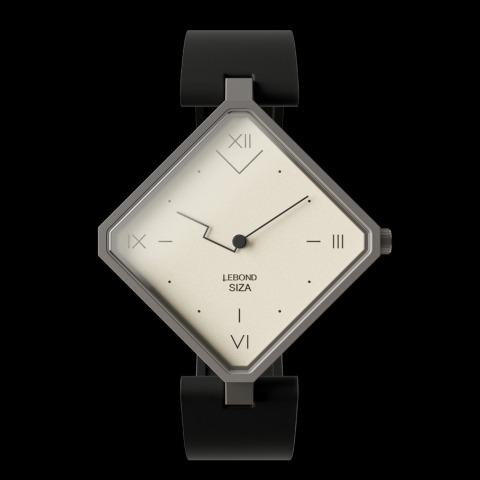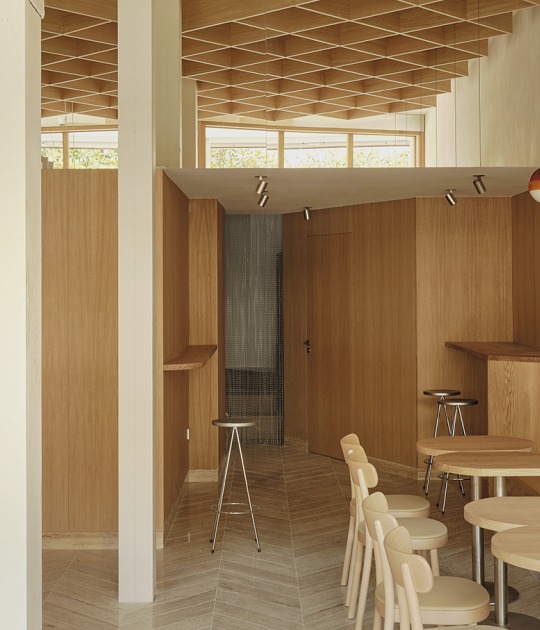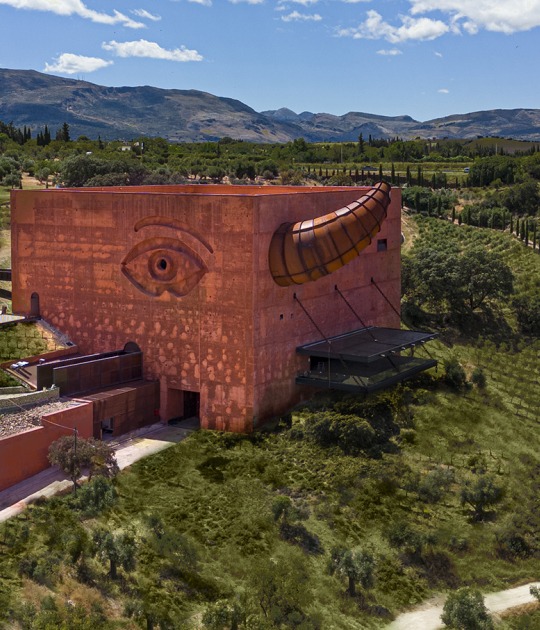Álvaro Joaquim Melo Siza Vieira was born in Matosinhos (near Porto), in 1933. From 1949-55 he studied at the School of Architecture, University of Porto. His first built project was finished in 1954. From 1955-58 he was collaborator of Arch. Fernando Távora. He taught at the School of Architecture (ESBAP) from 1966-69 and was appointed Professor of "Construction" in 1976. He was a Visiting Professor at the Ècole Polythéchnique of Lausanne, the University of Pennsylvania, Los Andes University of Bogotá and the Graduate School of Design of Harvard University; he taught at the School of Architecture of Porto (jubilate in 2003).
He is the author of many projects such as: the Boa Nova Tea House and Restaurant; 1200 dwellings built in Malagueira, Évora; the Superior School of Education in Setúbal, the new School of Architecture in Porto; the Library of Aveiro University; the Museum of Modern Art in Porto; the Church and Parochial Centre in Marco de Canavezes; the Pavilion of Portugal for EXPO '98 and the Pavilion of Portugal in Hannover 2000 (with Souto de Moura); the dwelling and offices complex of “Terraços de Bragança” in Lisbon; and he has rebuilt the burnt area of Chiado in Lisbon since 1988, including the projects for some buildings like Castro e Melo, Grandella, Chiado Stores, and others.
He has been coordinated the plan of Schilderswijk's recuperation in The Hague, Holland, since 1985, which finished in 89; in 1995 he finished the project for blocs 6-7-8 in Ceramique Terrein, Maastricht.
In Spain he has completed the projects for the Meteorological Centre of Villa Olimpica in Barcelona; the Museum of Contemporary Art of Galicia and the Faculty of Information Sciences in Santiago de Compostela; the Rectorate of the Alicante University; Zaida building – offices, commercial and dwelling complex in Granada; Sportive Complex Cornellà de L’lobregat in Barcelona.
Cultural Centre and auditorium for the Ibere Camargo Foundation in Brazil; Municipal Centre of Rosario in Argentina; lodging-house in the Plan of Recuperation and Transformation of Cidade Velha in Cap Vert; Serpentine Pavillion (2005) with Eduardo Souto Moura; Museum of Modern Art of Naples in Italy; Anyang Pavilion in South Korea (with Carlos Castanheira); Mimesis Museum in South Korea (with Carlos Castanheira); are to be mentioned.
He has participated in several lectures and conferences in Portugal, Spain, Italy, Germany, France, Norway, Holland, Switzerland, Austria, England, Colombia, Argentina, Brazil, Japan, Canada, United States, Romania, Greece, South Korea and Sweden.
Having been invited to participate in international competitions, he won the first place in Schlesisches Tor, Kreuzberg, Berlin (now built), at the recuperation of Campo di Marte in Venice (1985) and at the renewal of Casino and Café Winkler, Salzburg (1986); Cultural Centre for the La Defensa, Madrid (with José Paulo Santos) (1988/89); J. Paul Getty Museum, Malibu, California (with Peter Testa) (1993); Pietà Rondanini Room, Sforzesco Castell, Milan (1999); Special Plan Recoletos-Prado, Madrid (with Juan Miguel Hernandez Leon e Carlos Riaño) (2002); Toledo Hospital (Sánchez-Horneros office) (2003); “Atrio de la Alhambra” in Spain (with Juan Domingo Santos)(2010); “Parco delle Cave”, Lecce in Italy (with Carlos Castanheira) (2010).
He has participated in the competitions for Expo 92 in Sevilla, Spain (with Eduardo Souto de Moura and Adalberto Dias) (1986); for "Un Progetto per Siena", Italy (with José Paulo Santos) (1988); the Cultural Centre La Defensa in Madrid, Spain (1988/89); the Bibliothèque of France in Paris (1989/90), the Helsinki Museum (with Souto de Moura) (1992-93); Flamenco City of Xerez de la Frontera, Spain (with Juan Miguel Hernandez Leon) (2003).
From 1982 to 2010 has won many different awards and have been assigned with Medals of Cultural Merit from many country around the world. Doctor "Honoris Causa" in various European and International universities.
He is a member of the American Academy of Arts and Science; "Honorary Fellow" of the Royal Institute of British Architects; AIA/American Institute of Architects; Académie d'Architecture de France and European Academy of Sciences and Arts; Royal Swedish Academy of Fine Arts; IAA/International Academy of Architecture; American Academy of Arts and Letters.
 Lebond Siza by Álvaro Siza. Photograph by Fernando Guerra (FG+SG).
Lebond Siza by Álvaro Siza. Photograph by Fernando Guerra (FG+SG).


































